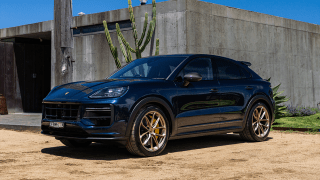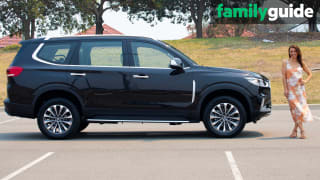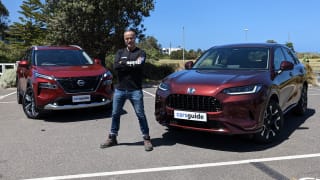The continued existence of camping is an enduring mystery. Surely, as soon as mankind had invented such wondrous technologies as the roof, its days should have been numbered, and the incredible arrival of electricity and then, best of all, hotels, should have seen tents everywhere folded up and thrown away. And yet it persists.
It’s probably clear by now that I am not a fan of sleeping on the ground, like an animal, nor of stumbling around in the dark and eating food that tastes lightly of bush fire, and yet there are parts of camping that I love, which is why I am, occasionally, talked into doing it.
I like both the peace and the quiet, the communing with nature and even the fresh air, but I do always end up pining for a decent meal and somewhere to charge my damn phone (yes, it’s good to get away from it all, but “all” shouldn’t include missing out on the news).

It was with no small amount of delight, then, that I recently discovered the ingenious wonder that is the Vehicle to Load (V2L) capability of the Mitsubishi Outlander Plug-in Hybrid EV, and quickly realised how it would revolutionise camping, all the way to the point of making it enjoyable, at last.
Essentially, Vehicle to Load means that you can use the electricity stored in the Outlander’s 20.0kWh lithium-ion battery pack to power anything you like*, via the vehicle’s two on-board 240V AC three-pin power points.
What this meant was that, as I set out to meet some camping-mad friends in the rugged wilds of rural NSW, I finally did so with a smile on my face and a boot filled with various cooking implements previously unseen at a campsite; everything from a slow cooker to an electric fry pan. (And my laptop, just in case things got really boring and I wanted to watch movies.)

Now, obviously some planning was called for, as I would need to charge up the battery and then keep at least some of that power for us when I arrived.
Fortunately, the hugely clever Mitsubishi Outlander Plug-in Hybrid EV has various settings that allow you to choose how, where and when you use the power you’ve got in that lithium-ion battery.
In my previous week with the Outlander, I’d managed to spend the whole week using only electric power, running tailpipe-emissions free, and not spent a cent, because I charged the battery every couple of days when the sun was out, using my solar panels. The Mitsubishi’s all-electric range of up to 84km^ was more than enough for my city-living needs.
In that mode, I was pushing the EV button and putting the car in its EV-only setting, but for this longer trip out of town I chose the “Save” mode, which meant the Outlander would run mainly using its powerful 2.4-litre engine, and would keep the power in the battery for its really important job - cooking things.

Normally, you might want to use the Save mode while driving at freeway speeds so that you can select EV mode when you get into a town, where it’s most useful, and beneficial, to drive using the electric motor.
Once we were all set up at the camp site and my friends had begun their painful process of trying to set up gas stoves or get a camp fire hot enough to badly burn some sausages, I made my triumphant flourish, brandishing a slow cooker and declaring that I would be having something a little more civilised for dinner; a properly tender beef stew, followed by pancakes cooked to perfection on an electric fry pan.
Their eyes went as wide as if they were starring in a remake of the Blair Witch Project and they watched in awe as I revealed the V2L three-pin plug in the back of the Outlander’s capacious load space, plugged in a power board and then started charging my phone while preparing my slow cooker, just to show off.
If you imagine how a primitive tribe, hidden in the Amazon for a century, would react to seeing a torch light up the darkness, that’s the kind of look I was given by my friends. This, truly, was revelatory.

The Outlander Plug-in Hybrid EV’s V2L system even lets you set a limit on how much of the power stored in your battery you want to use through your 240V plug, so if you want to save some all-electric range for the trip home, you can. I cooked and charged with impunity and still had more than 25 per cent of the battery capacity left when we finally, blessedly, packed up and left for home.
I can tell you that the food was marvellous, as was the portable speaker I plugged in, being able to use my laptop and the general feeling of not being so far removed from civilisation, and creature comforts.
As far as sleeping on the ground goes, well, I must admit I did abandon my stupid tent one night, when it was raining, and spent a far more comfortable night sleeping in the Outlander with the back seats folded down.
Truly, I think I may have solved the great camping conundrum.




.png)




Comments